expireddavid3808 posted May 22, 2021 08:19 PM
Item 1 of 5
Item 1 of 5
expireddavid3808 posted May 22, 2021 08:19 PM
DuctlessAire 12 Seer 12000 BTU 220V 1-Ton Ductless Mini Split Air Conditioner
+ Free Shipping$779
Home Depot
Visit Home DepotGood Deal
Bad Deal
Save
Share

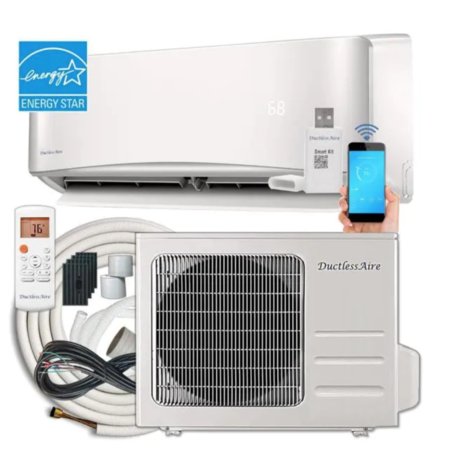
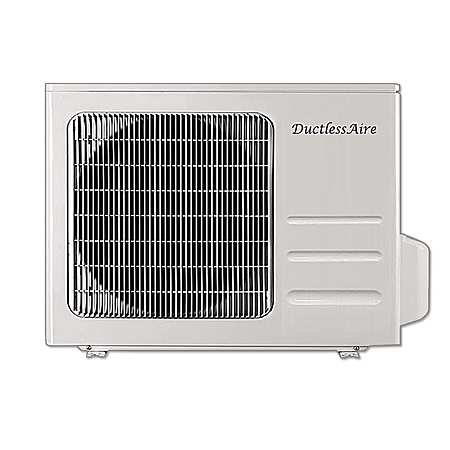
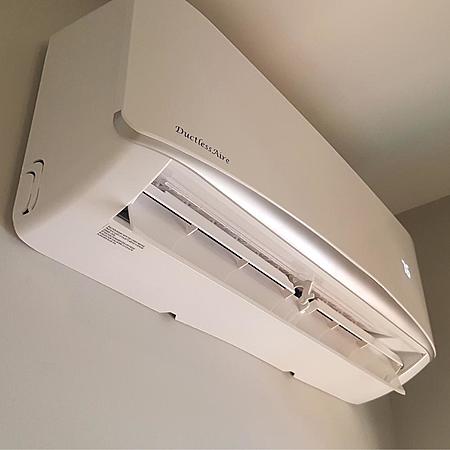
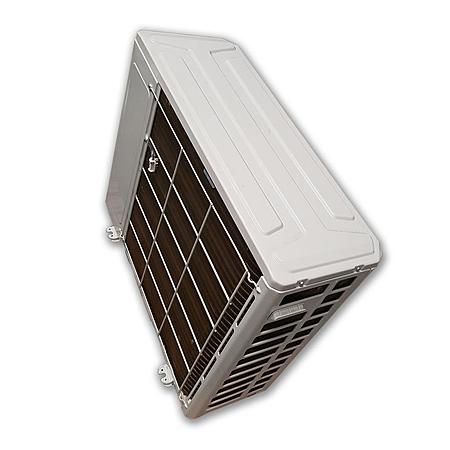
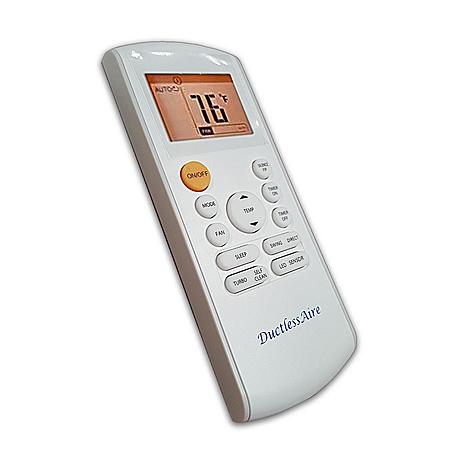





Leave a Comment
Top Comments
This works if you're handy since you'll probably do a better job. Doing things like a nitrogen pressure test, which aren't stated in the manual, is a good practice that many installers will skip unless it's explicitly stated in the manual like in some Mitsubishi units. This practice makes sense for heat pump R410A units which will see upwards of 450 psi on the head when in heat pump mode. But expect to spend $500-$700 on tools if you want to do it right.
Edit: if you want me to comment more on the tools I went with, let me know.
Edit Edit: As promised, I posted my tools breakdown reply on #99 of this thread, but I'm also going to post it below too. If this angers the mods then please remove post #99.
Everyone can decide what you need for your install versus others, but here's the tools that I bought for mine:
Nitrogen Tank w/ Regulator (got on Craigslist)1 $ 100.00
Appion CTEE14 MegaSeal Low-Loss Charging T-Fitting - 1/4'1 $ 49.94
Appion MGAVCR Mega Flow Vacuum Rated Valve Core Removal Tool – 5/16" System Connection1 $ 48.48
CPS VG200: Vacuum Micron Gauge with Digital LCD Display1 $ 146.21
Refrigeration Technologies RT201B Nylog Gasket/Thread Sealant1 $ 10.25
Yellow Jacket 42004 Series 41 Manifold with 3-1/8" Gauge, psi, R-22/404A/410A1 $ 112.29
Yellow Jacket 19173 R-410 5/16" to 1/4" coupler w/ schrader valve.1 $ 14.26
CPS Pro-Set R410A Flare Gauge1 $ 19.81
CPS BLACKMAX BFT850 Ultra-Lightweight R-410A Clutch-Type Ecentric Flaring Tool1 $ 130.03
Reed Tool DEBO Pencil Shape Deburring Tool for Copper1$11.68
RIDGID 32975 Model 103 Close Quarters Tubing Cutter, 1/8-inch to 5/8-inch Tube Cutter , Silver , Small1$12.67
Johnsen's 6915 Vacuum Pump Oil - 12 oz.1 $ 9.79
PITTSBURGH AUTOMOTIVE 3 CFM Two Stage Vacuum Pump1 $ 149.99
PITTSBURGH 3/8 In. Metric Crowfoot Wrench Set, 7 Pc.1 $ 9.99
For mine, it was a total of $825-ish, with it being more like $900 after tax. But I bought multiple things that most people don't need to buy, marked in italics, so you can save a lot of money skipping these. These optional tools represent an additional $372.61 ($400.55 after tax, at least where I live) you can eliminate about 50% from the tools budget.
First and foremost, don't attempt to work with electrical or HVAC unless you're pretty comfortable with DIY projects.
The Nitrogen tank is optional for pressure testing. Some say if you can pull a good vacuum and let it sit for a while that is "good enough" and most company's instructions exclude this from the installation instructions. But it's worth considering because when running R-410A in heat pump mode, you'll get high pressure across your head side of the loop. This makes sense because the high-pressure side = heat. So in my head it made sense you'd want to do a pressurization test and a vacuum down test, since one is pushing apart the fittings (pressure) and the other is sucking them together (vacuum). Since the fittings will all be exposed to both types of pressures it makes sense for me. Follow Dakine or Mitsubishi installation manual instructions for nitrogen pressure testing if you opt to do it. Note that most professional installers WILL SKIP THIS unless it's a unit that requires it (think Mitsubishi) and the installer is one of their "diamond" approved installers or whatever.
Secondly, I bought a flaring tool because I had a 2-head system and cut the tubing to fit the installation and make it more tidy. This is optional and I do not recommend it unless you know what you're doing. It also saves money to skip this. Before cutting, you need to make sure your run or runs have the required length to prevent overcharging the system. If you have a single head unit and end up cutting the tubes to 1/2 the length you may have too much refrigerant in the linesets. Refer to your manual or talk to the company before you decide to do this. And if you decide to do it anyways, yes it must be a HVAC specific flaring tool. Get one with the clutch system to prevent overtightening the flare press and make it foolproof. R-410A runs at too high of pressures to get away with subpar flares. Deciding to just accept the standard length of the copper tubing eliminates the costs associated with the Flaring tool, flaring gauge, deburring tool, and pipe cutting tool.
As for the rest, you do not NEED a digital micron gauge, many just use their normal gauge set's low pressure side gage and watch to see if the needle moves. This will also work. Again I wanted to go with professional duty equipment to get an install I'm 100% confident in. That way if the thing dies in a few years I won't have wonder in the back of my mind whether I screwed up the install. I know 100% my install was perfect. I went with the Yellow Jacket brand gauges, although you could in theory just get the low side gauge, hose, and valve if you're just pulling vacuum and save some money. I'm sure the garden variety chinesium brand gauges are probably perfectly fine for a solo install and will cut the cost in half for them.
The Appion Schrader core removal tool and the t-valve are totally optional too. You'd have to do some youtubing to see how they're used, but here's a great video which shows essentially the same setup I bought: https://www.youtube.com/watch?v=81EeY7S
But you can skip those tools and just use the Yellow Jacket 5/16" to 1/4" adapter and be just fine without them. Your pressure drawdown will just take a bit longer since you're going through the Schrader valve, and you'll loose a tiny bit of refrigerant before the schrader valve closes. Skipping these tools will save you $130-$140.
For the vacuum pump I went with a harbor freight 3CFM rated 2-stage vacuum pump. I believe it's rated for sub-30 microns of vacuum which is great, and a review on their site showed a guy pulling 13 microns if I recall correctly. To put this into perspective most manufacturers suggest pulling below 500 microns before charging the system. This is slightly overkill but it works for me.
Lastly I already have a torque wrench but you can get them dirt cheap from harbor freight, and I bought some crowfoot wrenches to use with my torque wrench to torque the bolts to the manufacturer's specifications. Will it really matter if you don't do it to spec? I don't know but I'm not finding out.
Then beyond all of this you'll have to run some 220-240v and have a disconnect box by your run. If you're not a confident DIY'er don't go for this, but if you are then just watch plenty of videos of installations, follow the instructions, and you'll be fine.
Pros-
No duct work is obvious.
On demand which can save heating/cooling bill.
More precise temperature control "zones".
Cons-
The zones play as double edge sword, when moving in or out the heated/air conditioned space takes some getting used to.
The indoor unit hangs on the wall compare to just a register, so the wall is more or less occupied.
Have to run additional electricity to both in door and outdoor units and the tubes from the indoor unit to the outdoor unit.
More filters to clean.
168 Comments
Sign up for a Slickdeals account to remove this ad.
part 1: https://youtu.be/iFBmh29GezU
part 2: https://youtu.be/Uh9bcdpU8gw
part 2 walks you through checking lines for leaks and vacuuming:
https://youtu.be/Uh9bcdpU8gw?t=5
The usual way of avoiding that is to use a ball valve [amazon.com] attached to the service valve's Schrader valve port to close and isolate the system from the vacuum pump while the vacuum pump is still running. Then refrigerant can be released into the system, and the hose and ball valve can be disconnected with the system now under positive pressure.
Besides being quick, DHL (and others) also does the paperwork for you that can be a little intimidating the first time or two. In quantity, a forwarder and inspector are good choices to employ.... someone on the other end that ok's you are getting what you paid for before loading.
Or, we could just take a trip... you could spend a week in just one wholesale mall and not see it all. About 1.5 Billion people are competing for your dollar that do not want to go back to the stone age of growing rice.
Personally, I like Vietnam a little better.... just now growing, super cheap to visit and shop. A haircut, facial, manicure, pedicure, ears, etc. and about a 90 minute massage with two girls is like $15 or less that is all above the board....
If I ran an HVAC contracting company, I'd buy stuff from over there by the container and undercut the competition who still buy all their equipment from local distributors. I'm surprised how unusual it is for contractors to do that.
If I ran an HVAC contracting company, I'd buy stuff from over there by the container and undercut the competition who still buy all their equipment from local distributors. I'm surprised how unusual it is for contractors to do that.
Most contractors are good with the labor end, but not so much the procurement end.
If you are going, you might want to make it sooner than later with the increasing tension brewing over Taiwan, China Sea and currencies.
https://www.lowes.com/pd/DuctlessAire-ENERGY-STAR-12000-BTU-500-sq-ft-Single-Ductless-Mini-Split-Air... [lowes.com]
https://www.lowes.com/pd/DuctlessAire-ENERGY-STAR-12000-BTU-500-sq-ft-Single-Ductless-Mini-Split-Air... [lowes.com]
Sign up for a Slickdeals account to remove this ad.
It is was easy, as in like buying from Amazon, everyone would be doing it.
But, you could fill up a 40' HQ and have it delivered from China to say, Chicago for about $3500 before dock fees and insurance. Are you ready to go into the ductless split system business?
$3,500 for a container? When was the last time you looked at pricing? Containers from Asia to the midwest are over 10K right now. That is IF you can find a container. They are in very short supply as the entire global supply chain is FUBAR. Try just getting a slot on a train in the US to carry the container from a west coast port is at least a month behind schedule.
Can these handle an over the garage room?
What if the lower garage space was more or less unconditioned?
Can these handle an over the garage room?
What if the lower garage space was more or less unconditioned?
I am unaware of any provision in Magnuson-Moss that makes it only applicable to complete, fully functional units. I just skimmed the complete text of the act and didn't see any such provision. If such a provision does exist, it would mean Magnuson-Moss wouldn't apply to something like a computer motherboard, which isn't a complete computer and requires skilled installation. It is true that Magnuson-Moss only applies to consumer goods, so the warranty on something like an industrial hydraulic pump used on mining equipment would not have to comply. But I don't think there any argument that a home air conditioner is a consumer good that falls under Magnuson-Moss.
Manufacturers illegally and flagrantly defy Magnuson-Moss all the time. Those "warranty void if removed" stickers are illegal under Magnuson-Moss, but that hasn't stopped manufacturers from using them. The FTC has taken some action on those stickers recently [uspirg.org], but manufacturers have for decades and will continue to use them knowing that the odds are in their favor that the FTC won't do anything about it.
I also don't think you understand how easy it is to destroy a unit ir the diagnostic criteria that goes into HVAC. More often than not, a tech won't even know the exact cause for defect in a part. And what do you think happens when the part is sent back to the manufacturer? Do you really think they're going to know if it was installed improperly? It's not easy or cheap to tear apart a compressor. They'll know why it doesn't work, but they'll probably won't be able to figure out what caused the malfunction.
Not sure why people keep bringing this stuff up. It's not like any of this warranty stuff is new. It was in place before, and hasn't changed since the Act was passed 45 yrs ago. Do people really think these companies have blatantly been violating the Act for almost a half a century with no one catching on? Come-on, think about.
If I ran an HVAC contracting company, I'd buy stuff from over there by the container and undercut the competition who still buy all their equipment from local distributors. I'm surprised how unusual it is for contractors to do that.
In the end it's not worth it. Could be worth it if you do stuff for yourself. I've installed units for complexes where they supplied everything (talking 100's of units), but they also had a FMO.
This works if you're handy since you'll probably do a better job. Doing things like a nitrogen pressure test, which aren't stated in the manual, is a good practice that many installers will skip unless it's explicitly stated in the manual like in some Mitsubishi units. This practice makes sense for heat pump R410A units which will see upwards of 450 psi on the head when in heat pump mode. But expect to spend $500-$700 on tools if you want to do it right.
Edit: if you want me to comment more on the tools I went with, let me know.
Edit Edit: As promised, I posted my tools breakdown reply on #99 of this thread, but I'm also going to post it below too. If this angers the mods then please remove post #99.
Everyone can decide what you need for your install versus others, but here's the tools that I bought for mine:
Nitrogen Tank w/ Regulator (got on Craigslist)1 $ 100.00
Appion CTEE14 MegaSeal Low-Loss Charging T-Fitting - 1/4'1 $ 49.94
Appion MGAVCR Mega Flow Vacuum Rated Valve Core Removal Tool – 5/16" System Connection1 $ 48.48
CPS VG200: Vacuum Micron Gauge with Digital LCD Display1 $ 146.21
Refrigeration Technologies RT201B Nylog Gasket/Thread Sealant1 $ 10.25
Yellow Jacket 42004 Series 41 Manifold with 3-1/8" Gauge, psi, R-22/404A/410A1 $ 112.29
Yellow Jacket 19173 R-410 5/16" to 1/4" coupler w/ schrader valve.1 $ 14.26
CPS Pro-Set R410A Flare Gauge1 $ 19.81
CPS BLACKMAX BFT850 Ultra-Lightweight R-410A Clutch-Type Ecentric Flaring Tool1 $ 130.03
Reed Tool DEBO Pencil Shape Deburring Tool for Copper1$11.68
RIDGID 32975 Model 103 Close Quarters Tubing Cutter, 1/8-inch to 5/8-inch Tube Cutter , Silver , Small1$12.67
Johnsen's 6915 Vacuum Pump Oil - 12 oz.1 $ 9.79
PITTSBURGH AUTOMOTIVE 3 CFM Two Stage Vacuum Pump1 $ 149.99
PITTSBURGH 3/8 In. Metric Crowfoot Wrench Set, 7 Pc.1 $ 9.99
For mine, it was a total of $825-ish, with it being more like $900 after tax. But I bought multiple things that most people don't need to buy, marked in italics, so you can save a lot of money skipping these. These optional tools represent an additional $372.61 ($400.55 after tax, at least where I live) you can eliminate about 50% from the tools budget.
First and foremost, don't attempt to work with electrical or HVAC unless you're pretty comfortable with DIY projects.
The Nitrogen tank is optional for pressure testing. Some say if you can pull a good vacuum and let it sit for a while that is "good enough" and most company's instructions exclude this from the installation instructions. But it's worth considering because when running R-410A in heat pump mode, you'll get high pressure across your head side of the loop. This makes sense because the high-pressure side = heat. So in my head it made sense you'd want to do a pressurization test and a vacuum down test, since one is pushing apart the fittings (pressure) and the other is sucking them together (vacuum). Since the fittings will all be exposed to both types of pressures it makes sense for me. Follow Dakine or Mitsubishi installation manual instructions for nitrogen pressure testing if you opt to do it. Note that most professional installers WILL SKIP THIS unless it's a unit that requires it (think Mitsubishi) and the installer is one of their "diamond" approved installers or whatever.
Secondly, I bought a flaring tool because I had a 2-head system and cut the tubing to fit the installation and make it more tidy. This is optional and I do not recommend it unless you know what you're doing. It also saves money to skip this. Before cutting, you need to make sure your run or runs have the required length to prevent overcharging the system. If you have a single head unit and end up cutting the tubes to 1/2 the length you may have too much refrigerant in the linesets. Refer to your manual or talk to the company before you decide to do this. And if you decide to do it anyways, yes it must be a HVAC specific flaring tool. Get one with the clutch system to prevent overtightening the flare press and make it foolproof. R-410A runs at too high of pressures to get away with subpar flares. Deciding to just accept the standard length of the copper tubing eliminates the costs associated with the Flaring tool, flaring gauge, deburring tool, and pipe cutting tool.
As for the rest, you do not NEED a digital micron gauge, many just use their normal gauge set's low pressure side gage and watch to see if the needle moves. This will also work. Again I wanted to go with professional duty equipment to get an install I'm 100% confident in. That way if the thing dies in a few years I won't have wonder in the back of my mind whether I screwed up the install. I know 100% my install was perfect. I went with the Yellow Jacket brand gauges, although you could in theory just get the low side gauge, hose, and valve if you're just pulling vacuum and save some money. I'm sure the garden variety chinesium brand gauges are probably perfectly fine for a solo install and will cut the cost in half for them.
The Appion Schrader core removal tool and the t-valve are totally optional too. You'd have to do some youtubing to see how they're used, but here's a great video which shows essentially the same setup I bought: https://www.youtube.com/watch?v=81EeY7S
But you can skip those tools and just use the Yellow Jacket 5/16" to 1/4" adapter and be just fine without them. Your pressure drawdown will just take a bit longer since you're going through the Schrader valve, and you'll loose a tiny bit of refrigerant before the schrader valve closes. Skipping these tools will save you $130-$140.
For the vacuum pump I went with a harbor freight 3CFM rated 2-stage vacuum pump. I believe it's rated for sub-30 microns of vacuum which is great, and a review on their site showed a guy pulling 13 microns if I recall correctly. To put this into perspective most manufacturers suggest pulling below 500 microns before charging the system. This is slightly overkill but it works for me.
Lastly I already have a torque wrench but you can get them dirt cheap from harbor freight, and I bought some crowfoot wrenches to use with my torque wrench to torque the bolts to the manufacturer's specifications. Will it really matter if you don't do it to spec? I don't know but I'm not finding out.
Then beyond all of this you'll have to run some 220-240v and have a disconnect box by your run. If you're not a confident DIY'er don't go for this, but if you are then just watch plenty of videos of installations, follow the instructions, and you'll be fine.
Thanks for confirmed.
Sign up for a Slickdeals account to remove this ad.
Leave a Comment